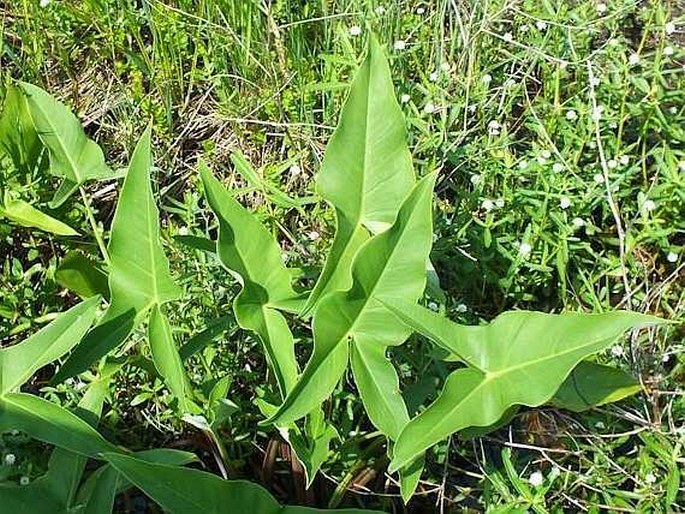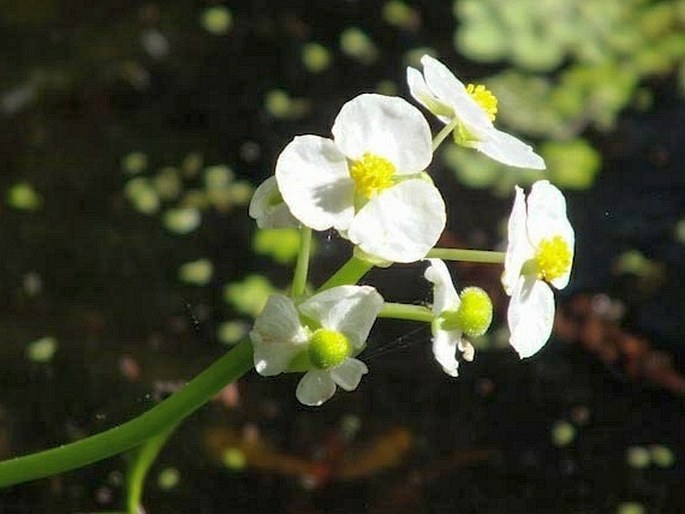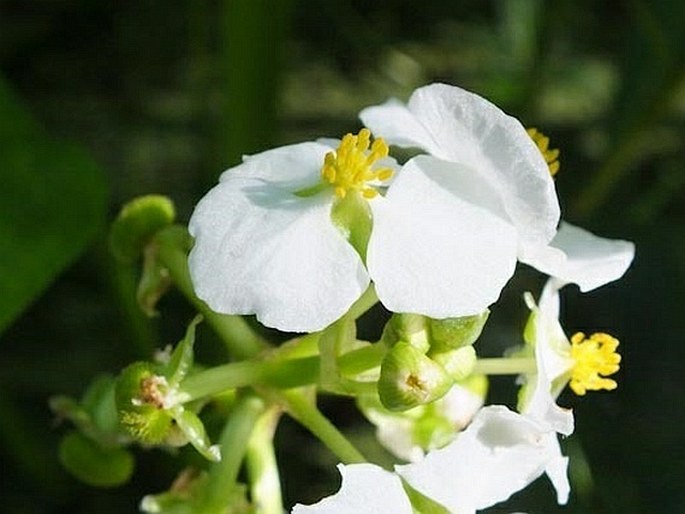Syn.: Sagittaria esculenta Howell, Sagittaria gracilis Pursh, Sagittaria hastata Pursh, Sagittaria longirostra (Micheli) J. G. Sm., Sagittaria obtusa Muhl. ex Willd., Sagittaria ornithorhyncha Small, Sagittaria planipes Fernald, Sagittaria pubescens Muhl., Sagittaria simplex Pursh, Sagittaria variabilis Engelm., Sagittaria viscosa C. Mohr, Urospatha friedrichsthaliana Schott
Family: Alismataceae Vent.

Distribution: American species occurring from southern parts of Canada to southern parts of US, originally from eastern part of the continent, also Central America and northern parts of South America (to Venezuela and Ecuador). Secondarily also found in some countries of Europe.
Ecology: Semiaquatic found in wetlands, swamps, marshes, margins of streams and lakes, at elevations from 0–1500 m. Blooms from spring to fall.
Description: Perennial herb, to 1 m tall, from a corm and stolons. Emersed leaves, petiole triangular, erect to ascending, 5–50 cm long, blade sagittate, rarely hastate, up to 30 cm long, up to 15 cm wide. There is considerable variability in the width of the leaves and the length of their basal lobes across different populations. Inflorescence is a raceme, rarely panicle, 3–9 whorls, emersed; peduncles 10–60 cm, flowers to 4 cm diameter, trimerous; bracts less than 1 cm long; sepals recurved to spreading, green; petals white; stamens 25–40; pistils numerous; male flowers on the upper part of inflorescence. Fruit is an achene, 2.5–3.5 mm long, borne in clusters about 15 mm across.
Threat and protection: State of Illinois lists this plant as endangered.



These images were taken in USA, Louisiana, Jean Lafitte NP, Barataria Preserve (May 2014).


